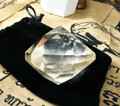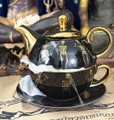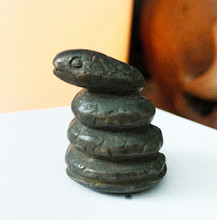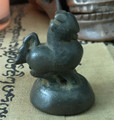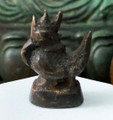 Loading... Please wait...
Loading... Please wait...- Home
- Voodoo Estate
- Grandmother's Rare Antique Burmese Weizza Mercury Bronze Cobra Opium Den Weight - A Poppy Demon Shrine circa 1830 - Gullah Dr. Buzzard's Gift and a Master Suite Find - The Voodoo Estate
- Home
- Opium Weights
- Grandmother's Rare Antique Burmese Weizza Mercury Bronze Cobra Opium Den Weight - A Poppy Demon Shrine circa 1830 - Gullah Dr. Buzzard's Gift and a Master Suite Find - The Voodoo Estate
Grandmother's Rare Antique Burmese Weizza Mercury Bronze Cobra Opium Den Weight - A Poppy Demon Shrine circa 1830 - Gullah Dr. Buzzard's Gift and a Master Suite Find - The Voodoo Estate
Product Description
Grandmother's Antique Burmese Weizza Mercury Bronze Cobra Opium Den Weight
A Poppy Demon Shrine circa 1830 - Gullah Dr. Buzzard's Gift
and Master Suite Find
~!~
~!~
Some Back Story
This antique Cobra snake opium weight is one of the thirty-four assorted lead, bronze and iron amulets and opium weights that were used with the named, "Poppy Demon Shrine" shown below.

These were recovered from grandmother's alcove and the letters, journals and inventory of this estate tell us they were given to her grandmother by a man they name as Gullah Dr. Buzzard of New Orleans in 1930 who stole the shrine, along with its weights, from a San Francisco opium den he had visited. All were recovered from this alcove and we will be offering them individually and in lots, so please stay tuned,
She tells a fascinating tale of Dr. Buzzard visiting grandmother with this tale and these gifts, as told to her by her mother, Marie Glapion. The owner of the establishment was a Chinese sorcerer who Dr Buzzard had seen at this shrine, invoking The Poppy Demon with the little ducks. What he witnessed caused him to covet these items and conceal them in his cloak on the way out, gleeful in the fact that stealing them increased their power.
This idea of stolen articles of magic increasing in power is frequently found in many cultures.
Dr Buzzard

The Opium Poppy Demon and its Invocation
Her journal entries list, "Poppy Demon Invocation" for use in, "Chasing the Dragon." This is described as a ritual and social practice of soaking a measured (weighed) ball of opium in absinthe, placing it an offering spoon, then pouring a small amount of absinthe in the spoon to,"sauté the ball of dope" before it would be smoked either in a pipe or by heating the spoon and inhaling the smoke through a pipe. Although done socially at their in house lounge, they would also, "Chase the Dragon" in a religious invocation of "The Poppy Demon."
Using this shrine with these weights along with polished reflective surfaces, they would materialize apparitions of this demon during, "ceremonial use in calling the demon spirits into this world," claiming they were able to summon what they called it's, "Spirit Guides justifiably described as Poppy Demons."
There are numerous journal entries concerning this and their use of opium and absinthe induced meditations, one of which reads; "androgynous energies well suited as in dream work, shielding one from dream attack and nightmares. Used in communication they are as a conduit with their realms and are soothing to the eye and spirit."She also makes numerous entries concerning these sessions attracting, "a good number of life energies and manifestations that will linger in the reflections."
Later entries urge caution in making eye contact with unknown apparitions and caution the use of this invocation by "the feint of heart and inexperienced."
~!~
Antique Burmese Weizza Mercury Bronze Opium Den Weights
According to her journals, she discontinued use of the shrine in the late 1940's, replacing it with two others for their use. It was then relegated to grandmother's alcove, the exterior of which became storm damaged, most likely during Hurricane Andrew. Although the shrine was damaged, we do not believe it was damaged by the storm. The shrine and aforementioned thirty-four weights are some of the few pieces recovered from this area.There are numerous mentions in their journals and letters, cautioning the use and storage of these artifacts. Apparently they have a habit of acting on their own and creating a creature akin to a Tokoloshe (a dwarf like water spirit). Hence, no photos of them together with the shrine which has already been sold with one of the weights.
Her journals and inventory name this one an, "Antique Burmese Weizza Mercury Bronze Naga Opium Den Weight." It is also apparent the proprietor of the den was a Weizza, most likely in exile as they name him in numerous crimes, including murder. They also name him as one of the maker's of some of these weights in his collection. Once again we come to missing or damaged ledgers which told us more of these people and later interactions with them
Our own research revealed;
Weizza
From Wikipedia, the free encyclopedia, for the most part...
A weizza or weikza is an immortal, supernatural wizarding mystic in Buddhism in Burma associated with esoteric and occult practices such as recitation of spells, samatha, mysticism and alchemy. The goal of this practice is to achieve immortality and the state of the Weizza, who awaits the appearance of the future Buddha, Metteya.
Weikza practices are less common than merit-making practices or vipassana meditation. During the socialist era from 1962 to 1988, Ne Win banned secret weizza associations, weizza magazines and literature, and portrayals of weizza from films and other media, considering them a threat to his regime. Weizza have made a resurgence since 1988, particularly following the abolition of the national censorship board in 2012. Burmese pagodas often house weizza shrines, where they are venerated for their spiritual purity and their devotion to those in need. Weizza teachers have also amassed hundreds of thousands of followers using social media.
Etymology
The word weizza comes from the Pali word vijja, which means “knowledge” or “wisdom” and is distantly related to the English word "wizard."
Weizzas in the Historical Tradition
Famous Yogis and Wizards from Myanmar
Aside from epigraphs, there are no local Indic or vernacular compositions that have been securely dated to pre-Pagan Burma. However, there are some later attributions of texts that were written during the first millennium. One such example is the Kappala kara, a vijjadhara ("weikza") text said to have been written by the bhikkhu Uttamasiri during the first century CE. The text survives in an 18th-century Pali-Burmese nissaya version (which attributes the text to Uttamasiri in its colophon) compiled by Taungdwin Sayadaw Ña abhidhammala kara.
In Myanmar, there are two classes of wizards; the sôns and the weizzas. The former are considered a bane to society, while the latter spend their days helping the common folk and undoing the curses brought upon by the sôns. The commonly known weizzas known today first appeared during the Konbaung dynasty, when Bo Bo Aung, a monk in Sagaing, discovered manuscripts revealing the secrets of weizza. However, many recognized weizzas today come from before the Konbaung dynasty. This was the last dynasty to rule Burma before colonial rule. Before weizzas, there were the Zawgyi and Yawgi. The Zawgyi were wizards who were written about in Burmese literature, while the Yawgi were Buddhist yogis who lead ascetic lives and wore brown robes. They followed eight to ten precepts of Buddhism, whereas most laymen follow five.
Weizzas are divided into four major orders: The Pyada Weizza, who work with mercury, the Than Weizza, who work with iron, the Se Weizza, who specialize in medicine and the In Weizza, who specialize in yantra signs and squares.
Among these, the Than and In are considered the most powerful. The Pyada Weizza, or Mercury Wizards, also study alchemy in order to produce gold and silver from more common metals. The Than Weizzas are considered by their followers as masters of not only their subject, but also as medical advisers.
Purported Abilities
Among their powers, weizzas possess the ability to see past lives, see and hear things that are far away, read minds, teleport, dive into the earth, walk on water, and be in multiple places simultaneously. Powerful practitioners of the weizzas’ way are purported to live for centuries, even choosing the time of their next reincarnation. The In Weizza, who work with cabalistic squares, use one's birth date and time to create powerful charms and spells. In The Burman, Sir J. George Scott described some squares and charms so powerful that they could set a house ablaze. Others, engraved in stone and embedded in one's skin, would prevent drowning. Merely scratching an in in a house or tree could cause lightning to strike it.
Weizza Grimoires
Two traditional manuscripts contain rudimentary guidelines on the practices of weizzas: the Bedin and the Deittôn. The latter is a book on astrology and cabalistic science. Containing just basic principles of the art of weizzas, the teachings in these texts are often surpassed by the weizza's own individual study and personal advancement. However, these books were once complete, many having been burned by religious zealots in the time of the last Buddha. The remains were spared from the fire by Devadatta, the cousin of Shin Gautama. Devadatta was always plotting against Shin Gautama, so he saved portions of the old science. Thus, this style of learning is looked upon with suspicion by many religious folk.
Medical Remedies
Weizza prescriptions may be composed of chili powder, cloves, and ginger for fevers to earth-oil infused with seeds, bark, leaves, flowers, roots, and minerals. Weizzas are specially adept with pills and powders, which are carried in bright red phials made of heavily scented bamboo. These ingredients are gathered with attention to the phases of the moon and placement of the constellations. Another potent ingredient in the weizza's cabinet is meteoric stones, which can be gathered within three days of lightning striking a piece of earth and are used as ophthalmic medicine. Weizzas seldom use liquids in their practice of medicine.
Medical Philosophies
Two schools of thought exist in weizza medicine:
The datsayas, whose primary focus is on diets and the beindawsayas, who work with potent drugs
In both schools, the human body is divided into four elements (dats): earth (patawi dat), fire (tezaw dat), water (apaw dat), and air (wayaw dat). Some practitioners also include ether (akatha), though this element is disregarded by doctors.
Earth: the flesh, bones, hair, intestines, etc.
Fire: eating, drinking, chewing, and licking.
Water: the fat, blood, bile, spittle, mucus, etc.
Air: the six kinds of winds.
Modern Perception of Weizzas
Weizza following still exists in Myanmar, though the socialist government during the Ne Win era suppressed this ideology. The former government forbade the publication of weizza materials and selling of weizza prints, which are popular in household altars. Even so, weizza followers abound. There exist exclusive groups of weizza devotees called gaing. These groups follow a set of tenets, are headed by a charismatic leader, and center their devotion on one or more weizza saints.
A list of Notable Weizzas
Bo Bo Aung
Bo Min Gaung
Kyaikhtisaung Sayadaw
Yatkansin Taung Sayadaw
Setkya Mintha
~!~
Mercury Bronze
~!~

But Back to the Weight
Unmarked, it displays a well worn patina from over a hundred years of handling. It measures approximately 15/16" x 11/16" x 9/16" and weighs 24.2 grams.
We only unwrapped these items for this photo session and no one has attempted to use them. It is certainly an unusual antique artifact with an extraordinary provenance, that is much nicer then the photographs have been able to depict.
~!~
We have been contacted and visited by a number of people who were interested in the items from this estate since our first batch was listed. Among the buyers have been known psychics and practitioners. More than one, after adorning themselves or handling their purchase, stated "this is a woman of power!" Many of our clients, after receiving items from this estate have reported dream contacts and other unexplained phenomenon.
Rest assured your order will be carefully packed to withstand the onslaught of the most deranged of parcel carriers.











